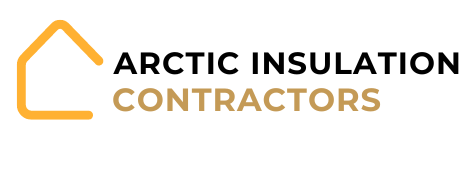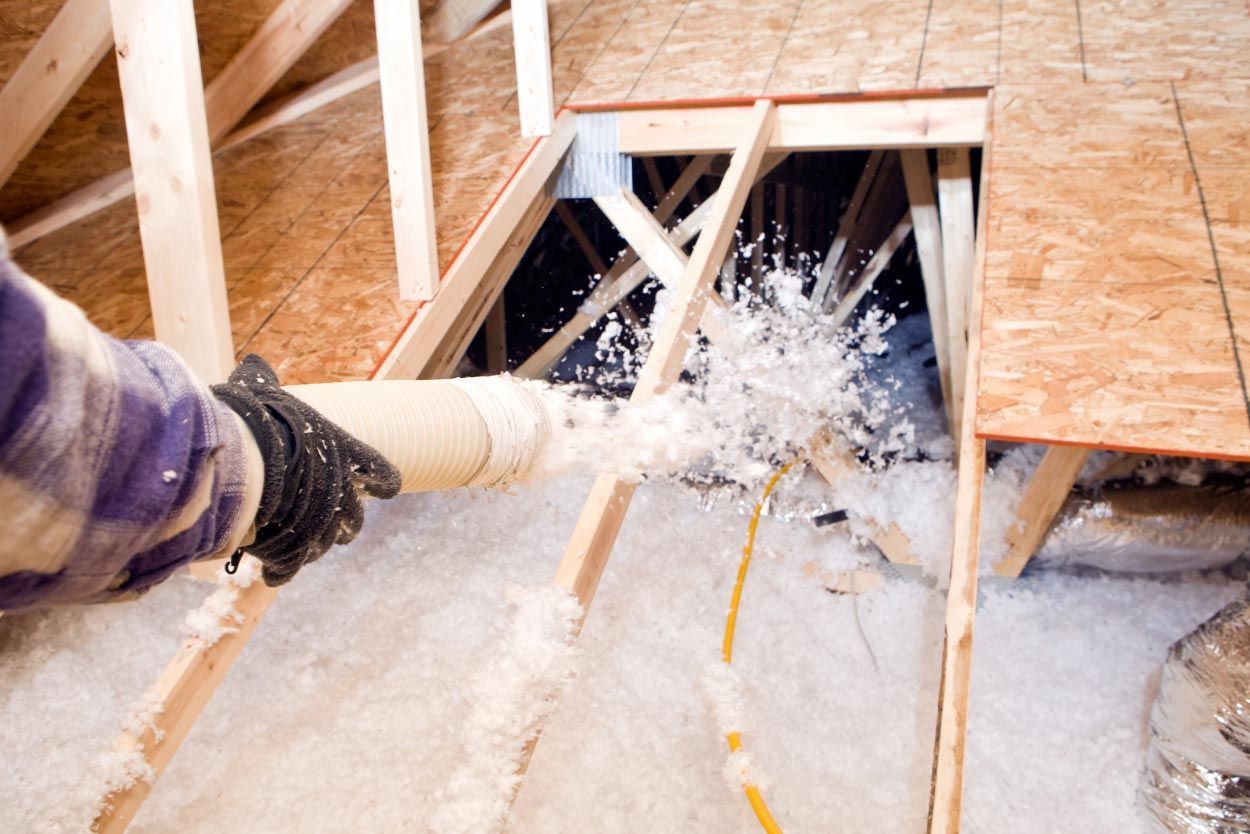Signs You Need to Replace the Insulation in Your Home
Home insulation plays a crucial role in maintaining comfort, reducing energy bills, and keeping your living space safe from moisture and mold. According to the U.S. Department of Energy, proper insulation can lower heating and cooling costs by up to 20%. Yet, many homeowners overlook their insulation until serious problems arise. Over time, insulation can degrade, become ineffective, or even harbor pests, leading to increased energy costs and discomfort. Recognizing the signs that your insulation needs replacement can save you money, prevent damage, and improve your home’s overall efficiency.
In this guide, we’ll cover the key signs that indicate it’s time to replace your home insulation, the types of insulation commonly used, and the benefits of updating your home’s insulation system.
Why Home Insulation Matters
Before diving into the signs of failing insulation, it’s essential to understand why insulation is so important:
- Energy Efficiency: Proper insulation keeps heat in during winter and out during summer. Ineffective insulation forces your heating and cooling systems to work harder, increasing energy bills.
- Comfort: Insulation helps maintain consistent temperatures throughout your home, eliminating drafts, cold spots, and overheating rooms.
- Moisture Control: Certain insulation types help control moisture, preventing mold growth and structural damage.
- Noise Reduction: Insulation can also reduce noise from outside or between rooms, improving your home’s overall comfort.
Over time, insulation can lose its effectiveness due to age, moisture, pests, or improper installation. Recognizing the warning signs early allows you to address issues before they escalate.
1. Higher Energy Bills
One of the first and most noticeable signs that your insulation is failing is a spike in energy bills. If your heating and cooling costs increase without any change in usage or energy rates, it may indicate that your home is losing heat or cool air through walls, floors, or the attic.
How it happens:
- Heat rises and escapes through poorly insulated attics or ceilings.
- Cold air seeps in through gaps in walls and floors during winter.
- Summer heat penetrates walls and attics, forcing your AC to run longer.
Tip: Compare your current energy bills to past bills. Sudden increases could signal a need for insulation replacement.
2. Uneven Temperatures in Rooms
If some rooms feel significantly colder in winter or hotter in summer than others, poor insulation is often the culprit. Older homes, in particular, may have inconsistent insulation coverage or gaps.
Signs to watch for:
- Cold floors or walls during winter
- Hot spots near windows or exterior walls in summer
- Drafts near doors, windows, or ceilings
Replacing insulation ensures that your home maintains consistent temperatures and reduces the workload on HVAC systems.
3. Visible Signs of Damage
Physical damage to insulation is a clear indicator that it needs replacement. Inspect your attic, basement, and walls (if accessible) for:
- Compressed or flattened insulation: Over time, insulation can lose its loft, decreasing its ability to trap heat.
- Moisture or water damage: Wet insulation loses its effectiveness and can promote mold growth.
- Pest infestations: Rodents or insects can damage insulation, leaving gaps and debris.
- Discoloration or mold spots: Mold indicates moisture infiltration, which often requires both insulation replacement and moisture remediation.
Even small damaged areas can reduce overall efficiency, so timely replacement is critical.
4. Aging Insulation
All insulation types have a lifespan. Over time, materials like fiberglass, cellulose, or foam degrade and lose their insulating properties.
Typical lifespan:
- Fiberglass batt insulation: 20–30 years
- Cellulose insulation: 15–25 years
- Spray foam insulation: 20–30 years
If your insulation is approaching or has surpassed these timelines, it may be time to consider a full replacement to maintain energy efficiency and comfort.
5. Excessive Noise from Outside
Insulation isn’t just about temperature control, it also helps reduce outside noise. If you notice that your home has become noisier over time, it may be a sign that insulation is failing.
Common indicators:
- Increased street noise or neighbor sounds
- Loud HVAC operation echoes through walls
- Vibrations or rattling in ceilings
Upgrading insulation with materials that have higher soundproofing capabilities can improve comfort and privacy.
6. Drafts and Air Leaks
Even with modern windows and doors, poor or aging insulation can lead to drafts. You may feel cold air near walls, ceilings, or floors. Air leaks are a sign that insulation may not be providing adequate protection.
Check these areas:
- Attic hatches or crawl spaces
- Gaps around plumbing, wiring, or vents
- Baseboards and exterior wall seams
Sealing these gaps and replacing insulation can significantly reduce drafts and improve energy efficiency.
7. Mold and Mildew Issues
Moisture is one of the biggest threats to insulation. Damp or wet insulation becomes ineffective and can create the perfect environment for mold and mildew growth.
Signs include:
- Musty odors in rooms, attics, or basements
- Visible mold growth on walls or ceilings
- Health issues like allergies or respiratory problems
If you notice these signs, inspect your insulation for moisture damage and consider replacing it with moisture-resistant materials.
8. Pest Infestations
Rodents, insects, and other pests can cause significant damage to insulation by creating holes, nesting in it, or leaving droppings.
Common pests affecting insulation:
- Mice and rats
- Squirrels in attics
- Termites or carpenter ants
Damaged insulation loses its effectiveness and may also pose health risks. Professional removal and replacement are often necessary when infestations occur.
9. Outdated Insulation Types
Older homes may have insulation materials that no longer meet current energy efficiency standards. For example, asbestos-containing insulation or older forms of cellulose may be hazardous or ineffective.
Benefits of updating insulation:
- Better thermal performance
- Improved indoor air quality
- Compliance with modern energy codes
- Long-term energy savings
Replacing outdated insulation ensures safety, efficiency, and comfort.
10. Increased Condensation on Windows or Walls
Excess condensation inside your home is often a sign of poor insulation and inadequate ventilation. Insufficient insulation allows warm, moist indoor air to contact cold surfaces, leading to condensation.
Effects of condensation:
- Water stains on walls or ceilings
- Mold and mildew growth
- Damage to paint, drywall, and wood surfaces
Proper insulation can help regulate indoor temperatures and reduce condensation-related problems.
Types of Insulation to Consider
When replacing insulation, homeowners have several options depending on their needs and budget:
- Fiberglass Batts: Affordable and widely used, suitable for walls, attics, and floors.
- Spray Foam: Provides excellent air sealing, ideal for tight spaces and energy-efficient homes.
- Cellulose: Eco-friendly, made from recycled paper, suitable for attic and wall cavities.
- Rigid Foam Boards: Provide high insulating value, commonly used in basements and exterior walls.
- Mineral Wool (Rock Wool): Fire-resistant and soundproof, suitable for walls and ceilings.
A professional assessment can help you choose the right type based on your home’s structure, climate, and energy goals.
Benefits of Replacing Old Insulation
Investing in new insulation brings several benefits:
- Lower Energy Bills: Updated insulation reduces the workload on heating and cooling systems
- Enhanced Comfort: Maintains consistent temperatures throughout your home.
- Improved Air Quality: Reduces dust, allergens, and mold.
- Noise Reduction: High-quality insulation can dampen outside noise.
- Increased Home Value: Energy-efficient upgrades are appealing to buyers.
- Prevention of Structural Damage: Moisture-resistant insulation helps protect walls and roofs.
How to Determine if You Need Replacement
To assess your insulation’s condition:
- Perform a visual inspection of your attic, walls, and crawl spaces.
- Check energy bills for unexplained increases.
- Look for drafts or uneven temperatures in your home.
- Monitor for moisture issues or mold growth.
- Consult a professional energy auditor to measure insulation performance (R-value testing).
These steps can help you identify whether repair or full replacement is needed.
Conclusion
Insulation is key to a comfortable, energy-efficient, and healthy home. Over time, it can degrade due to age, moisture, pests, or poor installation. Signs like high energy bills, uneven temperatures, visible damage, mold, or drafts indicate it’s time for replacement.
Upgrading insulation improves comfort, lowers energy costs, protects against moisture, and boosts home value. Schedule a professional inspection today to keep your home safe, efficient, and comfortable.
Frequently Asked Questions
How often should home insulation be replaced?
Most insulation lasts 15–30 years depending on the material. However, if it becomes wet, damaged by pests, or compressed, it may need replacement sooner.
What are the most common signs that insulation needs replacing?
Key signs include higher energy bills, uneven room temperatures, drafts, visible mold or moisture, and pest infestations in walls or attics.
Can I replace home insulation myself?
Some homeowners replace batt insulation as a DIY project, but professional replacement is recommended, especially for spray foam, blown-in cellulose, or when mold and asbestos concerns are present.
What type of insulation is best for my home?
The best type depends on your home’s structure, budget, and climate. Fiberglass batts are cost-effective, spray foam offers superior air sealing, and cellulose is eco-friendly. A professional energy audit can help determine the best option.
Does new insulation really lower energy bills?
Yes. Proper insulation reduces heating and cooling loss, which can cut energy costs by 15–30%. Over time, the savings often offset the cost of replacement.


